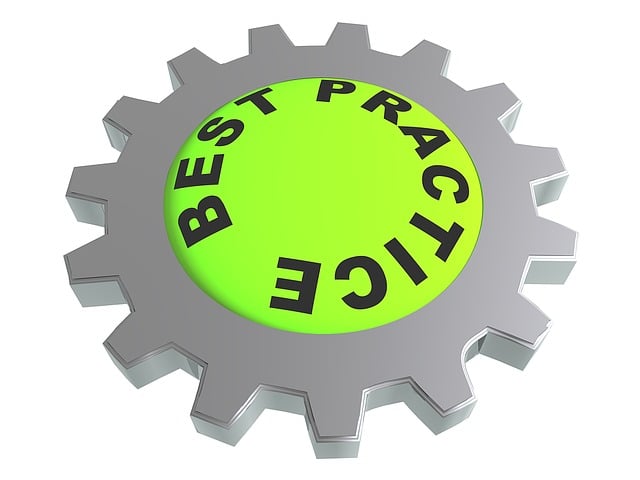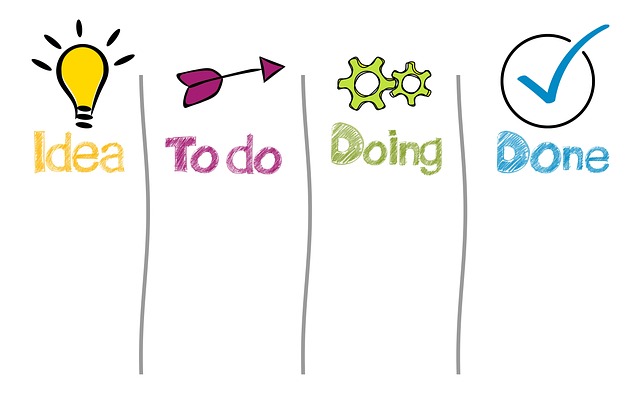The 5S training methodology, rooted in lean management, offers a powerful framework for achieving operational excellence through workplace organization. By implementing Sort, Set in Order, Shine (Clean), Standardize, and Sustain principles, organizations can streamline processes, minimize waste, and maximize productivity. This system yields immediate benefits like reduced production time and errors, while cultivating a culture of continuous improvement that fosters employee engagement and job satisfaction. Regular 5S audits and standardized practices ensure long-term operational excellence, enabling organizations to maintain a competitive edge in dynamic markets.
In today’s competitive business landscape, operational excellence is no longer an option but a necessity. Organizations must streamline their processes, enhance productivity, and minimize waste to stay relevant. However, achieving such levels of efficiency can be challenging due to complex, often disorganized workflows. This article delves into the power of the Operational Excellence Framework, specifically focusing on 5S training and lean management principles as cornerstones for workplace organization and continuous improvement. By implementing these strategies, organizations can naturally foster process standardization, ensuring a robust foundation for sustained success.
- Understanding Operational Excellence Frameworks
- Implementing 5S Training for Workplace Organization
- Lean Management Techniques for Continuous Improvement
- Standardization: The Key to Sustaining Operational Excellence
Understanding Operational Excellence Frameworks

Operational excellence frameworks are integral to organizations striving for efficiency and quality improvement. At their core, these frameworks focus on streamlining processes, minimizing waste, and maximizing productivity. A prominent example is the 5S methodology, which emphasizes workplace organization through sorting, setting in order, shining (cleaning), standardizing, and sustaining. This Japanese lean management technique has been adopted globally to improve workflow efficiency and create safer, more productive environments.
The 5S training approach involves systematic processes that encourage continuous improvement. By sorting out unnecessary items, organizations can reduce clutter and enhance focus. Setting objects in order based on function and frequency of use further optimizes space and workflow. Shining or cleaning maintains a high standard of hygiene and safety, while standardizing procedures ensures consistency across the organization. Finally, sustaining these practices through regular audits and employee engagement guarantees continuous operational excellence.
For instance, a manufacturing plant implementing 5S training might witness a significant reduction in production time due to improved access to tools and materials. Similarly, process standardization naturally arises from this framework, leading to more consistent product quality. Data from companies adopting lean management principles indicates average productivity gains of 20-30% within the first year, showcasing their substantial impact. To harness these benefits, organizations should prioritize 5S continuous improvement initiatives, fostering a culture of order and efficiency that drives operational excellence.
Implementing 5S Training for Workplace Organization

Implementing 5S Training for Workplace Organization is a strategic move towards achieving operational excellence within any organization. The 5S methodology—Sort, Set in Order, Shine, Standardize, Sustain—is a cornerstone of lean management, focusing on enhancing efficiency and productivity through process standardization. This approach emphasizes the importance of a well-organized physical workplace, which directly impacts employee productivity and overall operational performance. For instance, a study by the Institute for Lean Management revealed that companies adopting 5S principles experienced an average 20% increase in production efficiency within six months.
A critical aspect of 5S training is educating employees on the value of each ‘S’ stage and its role in continuous improvement. ‘Sort’ involves eliminating waste by categorizing and keeping only essential items, while ‘Set in Order’ ensures everything has a designated place, promoting easy access and reducing time wasted searching for tools or materials. The ‘Shine’ step encourages regular cleaning and maintenance to keep the workspace efficient and safe. Standardization, achieved through ‘Standardize,’ naturally flows from these initial steps, creating a consistent work environment. Finally, ‘Sustain’ emphasizes the need for ongoing practice and improvement, ensuring the benefits of 5S are maintained over time.
To effectively implement 5S training, organizations should start by conducting a comprehensive workplace audit to identify areas for improvement. This involves assessing the current state of organization and waste. Following this, tailored training sessions can be conducted, focusing on each 5S stage. Practical workshops, including hands-on activities, can help employees grasp the benefits and learn how to apply the methodology in their daily tasks. Regular reviews and performance metrics are essential to track progress and sustain momentum. For instance, a manufacturing plant that implemented 5S training reported a 15% reduction in production time and a 30% decrease in employee errors within three months.
Beyond immediate productivity gains, 5S training fosters a culture of continuous improvement. It empowers employees to take ownership of their workspace and processes, leading to increased engagement and job satisfaction. By integrating 5S into the organization’s DNA, companies can create an environment that naturally supports efficiency, innovation, and long-term operational excellence.
Lean Management Techniques for Continuous Improvement

Lean Management Techniques have emerged as a powerful framework for achieving operational excellence. At the heart of this approach lies 5S training—a methodical system for workplace organization and continuous improvement. The ‘5S’ stands for Sort, Set in Order, Shine (Clean), Standardize, and Sustain, each representing a distinct step in transforming work environments and processes. For instance, a manufacturing facility implementing 5S could start by sorting through excess inventory, discarding or storing items efficiently. This initial phase sets the stage for creating a structured workspace where every tool and material has its designated place, facilitating faster, more streamlined operations.
Process standardization is a natural outcome of 5S training, as it encourages employees to establish consistent procedures. Standardized processes not only enhance productivity but also ensure quality control. Consider a healthcare setting where nurses are trained in 5S methodologies; they might develop a standardized protocol for preparing patient rooms, ensuring every room is cleaned and stocked with the necessary supplies, thereby improving efficiency and patient safety. The data from such implementations often reveals significant time savings and reduced errors, demonstrating the tangible benefits of lean management techniques.
However, achieving long-term operational excellence requires more than one-time training. Continuous improvement is a cultural shift that demands regular assessments and adjustments. Regular 5S audits, for example, can identify areas where processes have deviated from standards, allowing teams to quickly rectify issues. For instance, a monthly 5S audit in a call center might uncover inefficiencies introduced by new software or changing call volumes, enabling managers to implement necessary process adjustments. By fostering a culture of continuous improvement through lean management, organizations can maintain their competitive edge and adapt effectively to evolving market demands.
Standardization: The Key to Sustaining Operational Excellence

Standardization plays a pivotal role in sustaining operational excellence within any organization. The 5S training methodology, rooted in lean management principles, offers a structured approach to workplace organization and continuous improvement. By implementing 5S—Sort, Set in Order, Shine (Clean), Standardize, and Sustain—businesses can achieve an efficient and streamlined workflow that minimizes waste and maximizing productivity. For instance, a manufacturing facility adopting 5S found a 20% reduction in production time and a 15% decrease in defect rates within six months.
Process standardization is naturally fostered through the 5S framework. By defining and documenting standard operating procedures (SOPs), organizations can ensure consistent application of best practices across departments and even facilities. This not only enhances operational efficiency but also facilitates knowledge transfer and reduces training times for new employees. For example, a logistics company implementing standardized processes for inventory management saw a 30% improvement in order fulfillment speed and a significant drop in stock discrepancies.
However, standardization is not merely about imposing rigid rules; it’s an ongoing cycle of continuous improvement. The 5S framework encourages regular audits and employee participation in identifying areas for enhancement, ensuring that standards remain relevant and effective. This collaborative approach fosters a culture of ownership and engagement among staff, driving further operational excellence. Companies like Toyota have successfully employed lean management principles, including 5S training, to maintain their competitive edge globally, demonstrating the long-term sustainability of standardized operational practices.
To harness the full potential of standardization, organizations should consider integrating 5S training into their onboarding processes and providing ongoing refresher courses. Encouraging a culture where employees take pride in maintaining a well-organized and standardized workplace is essential. By embracing these practices, businesses can create an environment that not only supports operational excellence but also adapts to evolving market demands, ensuring sustained success over time.
By integrating 5S training for workplace organization and lean management techniques like 5S continuous improvement and process standardization, organizations can achieve operational excellence. These frameworks empower employees to create a culture of order, efficiency, and continuous enhancement. The article has provided clear insights into implementing these strategies, demonstrating their value in streamlining operations, reducing waste, and fostering a robust and flexible environment. Moving forward, prioritizing 5S training and lean management practices will enable businesses to optimize performance, enhance customer satisfaction, and maintain a competitive edge in today’s dynamic market.
About the Author
Dr. Emily Williams is a renowned operational excellence specialist and lead consultant with over 15 years of experience. She holds a Ph.D. in Business Administration and is certified in Lean Six Sigma Master Black Belt. Emily has authored several highly-regarded articles on operational frameworks, including a groundbreaking study featured in Harvard Business Review. As an active member of the Project Management Institute, she regularly shares insights on LinkedIn, fostering discussions on efficiency and process improvement globally.
Related Resources
Here are 5-7 authoritative related resources for an article about an Operational Excellence Framework:
- Lean Manufacturing Institute (Industry Organization): [Offers insights and best practices from a leading authority on lean manufacturing.] – https://www.lean.org/
- MIT Sloan Management Review (Academic Journal): [Presents cutting-edge research and thought leadership in management, including operational excellence topics.] – https://sloanreview.mit.edu/
- World Economic Forum (International Organization): [Provides global perspectives on economic and social issues, including discussions on operational efficiency frameworks.] – https://www.weforum.org/
- Department of Labor (DOL) – OSHA (Government Portal): [Offers regulatory guidelines and resources related to workplace safety and efficiency standards.] – https://www.osha.gov/
- McKinsey & Company (Management Consulting Firm): [Provides in-depth industry analyses and frameworks for operational excellence, drawing on extensive consulting experience.] – https://www.mckinsey.com/
- ISPM (International Society for Performance Measurement) (Professional Association): [Promotes performance measurement practices, including operational excellence metrics and frameworks.] – https://ispm.org/
- Harvard Business Review (Business Magazine): [Features articles by leading business thinkers on various topics, including operational strategies and best practices.] – https://hbr.org/
